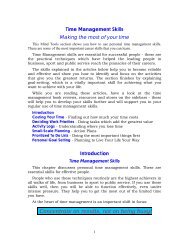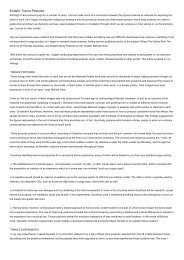Executive Coaching - A Guide For The HR Professional.pdf
Executive Coaching - A Guide For The HR Professional.pdf
Executive Coaching - A Guide For The HR Professional.pdf
You also want an ePaper? Increase the reach of your titles
YUMPU automatically turns print PDFs into web optimized ePapers that Google loves.
100 EXECUTIVE COACHING<br />
............................<br />
then a second round of assessment may be used for comparison<br />
between Time 1 and Time 2. This is recommended only if there has<br />
been sufficient time between the first and second data-collection<br />
efforts. Generally, a minimum of a six-month timeframe is needed<br />
to lapse between the first and second data collection in order for the<br />
client to initiate new behaviors and for those behaviors to actually<br />
be noticed by others.<br />
Sometimes, qualitative methods, such as interviews, are sufficient<br />
to measure changes. <strong>The</strong>se are especially effective if the interviews<br />
were also completed initially, so comparisons could be made<br />
between the themes emerging at Time 1 and Time 2.<br />
Another source of evaluation of the impact of coaching is the<br />
action plan. If an action plan had been created as one of the steps<br />
in the coaching process, then the evaluation could center on how<br />
the goals in the action plan were completed.<br />
What Coaches Don’t Do<br />
This next section really shouldn’t be necessary, but unfortunately<br />
once in a while coaches are asked—explicitly or covertly—to take<br />
actions that are out of their proper domain. Sometimes the organization<br />
has a strong need for related services. Since the coach is<br />
already familiar with the issues in the organization and has established<br />
a level of comfort with others, there may be the tendency to<br />
ask the coach to do other work that is not appropriate to the coach’s<br />
role or area of expertise. Some of this other work may involve the<br />
areas of supervision and employee selection.<br />
Supervision<br />
As we explained in Chapter 7, one of the most important roles of a<br />
boss is to create the case for behavior change. It is the task of the boss<br />
to tell the client what he or she needs to do differently in order to<br />
meet expectations. This is a supervisory task. <strong>The</strong> coach has no legitimacy<br />
on this matter, except as a messenger, which is an awkward role<br />
to be in. It is the boss who creates the case for change. <strong>The</strong> coach

















